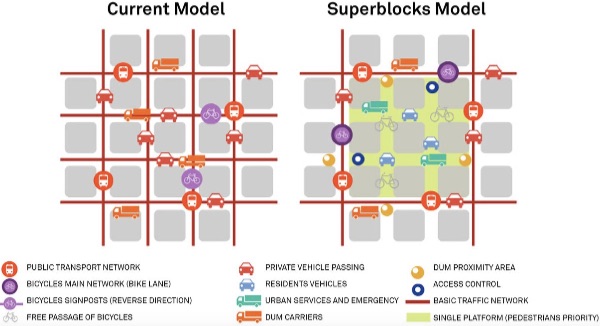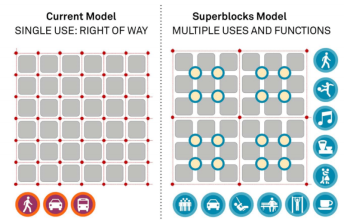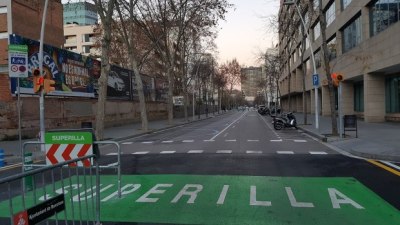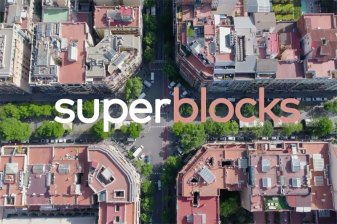Barcelona’s Superblocks: A “New Urban Model” to Reclaim Streets for People
Superblock expert Salvador Rueda was a keynote speaker at the Transportation Alternatives Vision Zero Cities conference.

In the U.S., the term “superblock” conjures up the excess of urban renewal and the breakdown of walkable street grids. But in Barcelona, a different type of superblock is making streets more hospitable and humane.
Salvador Rueda, founder and director of the Urban Ecology Agency of Barcelona, gave a keynote address at the Transportation Alternatives Vision Zero Cities conference today. Speaking through a translator in Catalan, Rueda explained the superblock concept, which he has developed over the course of 30 years, to a capacity crowd at Fordham University School of Law on the Upper West Side.
In Barcelona, superblocks are three-block by three-block areas redesigned for people. There are no through routes for motorists. This helps limit traffic to local use — “It’s stupid to go in unless you’re going to a place inside,” Rueda said — and reduces noise and pollution while freeing up space for walking and biking.
“The problem is not the cars,” said Rueda. “The problem is the bad use of cars, which is something different.”
The speed limit for motorists inside a superblock is 10 kilometers (6.2 miles) per hour, a speed calibrated to allow children to “play ball in the street” without risking their lives.
In Barcelona, the 17 percent of people who use cars every day take up around three-quarters of the city’s public space, said Rueda, on streets where “if you make a mistake, you’re dead.”
Currently, Barcelona has 1.85 square meters of green space per person — “That is to say, nothing.” But the city has embraced the superblock concept to improve the public realm and reduce pollution, which Rueda said costs Barcelona 45 billion euros a year. Then there’s the human toll: thousands of premature deaths and hospitalizations annually due to bronchitis, asthma, and related illnesses.
Barcelona has tried before to wrest streets from motor vehicles, with mixed results. With superblocks and other measures, the city wants to reduce vehicle traffic by 21 percent. The Daily Mail reported that once superblocks are built out, the share of street space that prioritizes pedestrians will increase from 27 percent to 77 percent.
Ultimately, though, the goal is to redefine the role of city streets. Superblocks, said Rueda, are “the basis for the new urban model. Period.”


